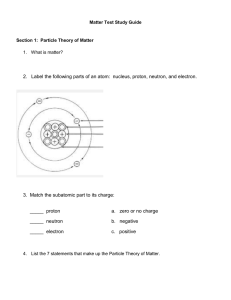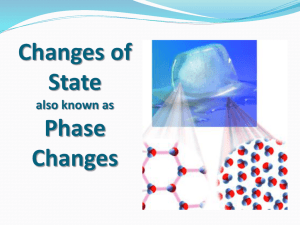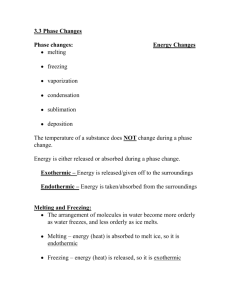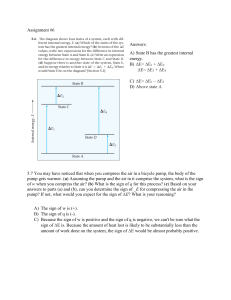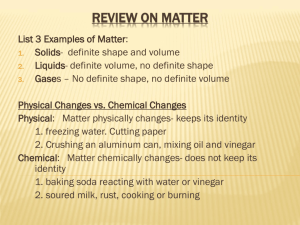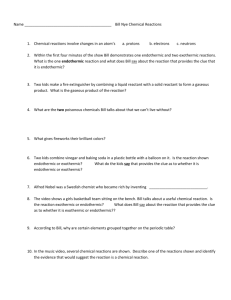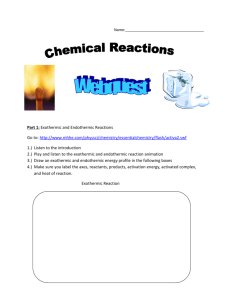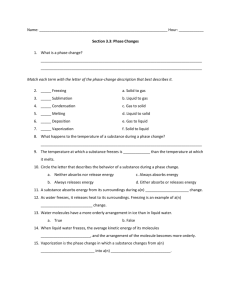States of Matter Ch3 ANSWERS
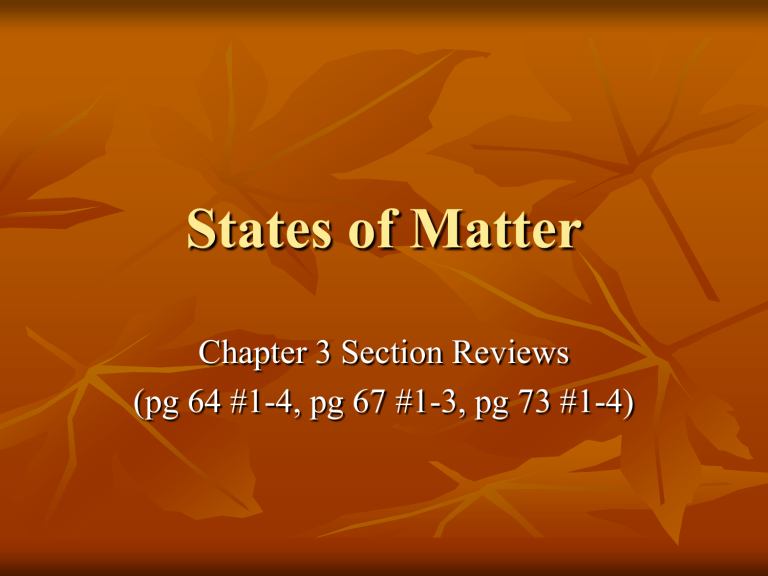
States of Matter
Chapter 3 Section Reviews
(pg 64 #1-4, pg 67 #1-3, pg 73 #1-4)
pg 64 #1-4
1.
2.
List two properties that all particles of matter have in common. They move constantly and are attracted to one another.
Describe solids, liquids, and gases in terms of shape and volume. Solids have definite shape and volume. Liquids take the shape of their container but have definite volume. Gases take the shape and volume of their container.
pg 64 #1-4
3.
Why can the volume of a gas change? The volume of a gas can change because the atoms or molecules of gas can move closer together due to the large amount of space between the particles.
4.
pg 64 #1-4
Explain what happens inside the ball when you pump up a flat basketball. Pumping up a flat basketball increases the number of atoms and molecules of air in the ball.
The greater number of particles would cause the pressure in the ball to increase.
1.
pg 67 #1-3
When a scientists record the volume of a gas, why do they also record the temperature and the pressure? The volume of a gas can be changed by changing the temperature and the pressure.
2.
pg 67 #1-3
List two differences between gases and plasma. Plasmas conduct electric current and are affected by electric and magnetic fields.
3.
pg 67 #1-3
What happens to the volume of a balloon left on a sunny windowsill? Explain.
The volume of the balloon will increase. Leaving the balloon on a sunny windowsill will cause the temperature of the gas in the balloon to increase. According to
Charles’s Law, the volume will increase as the temperature increases.
1.
pg 73 #1-4
Compare endothermic and exothermic changes. During endothermic changes, energy is absorbed. During exothermic changes, energy is released.
2.
pg 73 #1-4
Classify each change of state
(melting, freezing, vaporization, condensation, and sublimation) as endothermic or exothermic?
Exothermic: freezing, condensation; Endothermic: melting, vaporization, sublimation
3.
pg 73 #1-4
Describe how the motion and arrangement of particles change as a substance freezes.
As a substance freezes, its particles lose some of their freedom of motion and become more orderly.
4.
pg 73 #1-4
How are evaporation and boiling different? How are they similar?. Evaporation occurs only at the surface of a liquid while boiling occurs throughout a liquid. Bothe are endothermic processes that change a liquid to gas.
